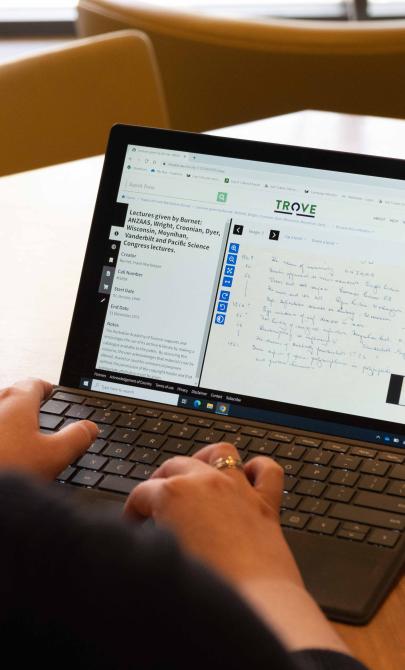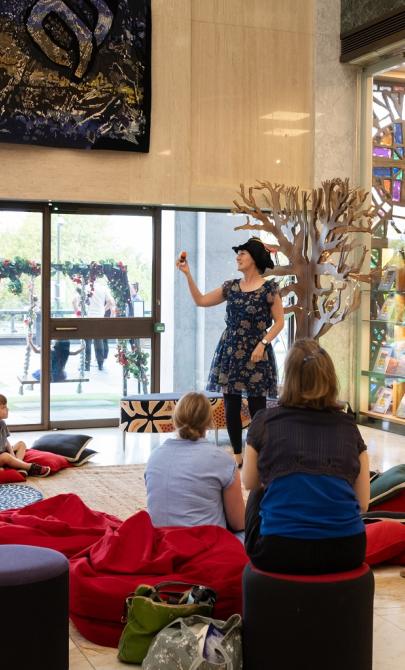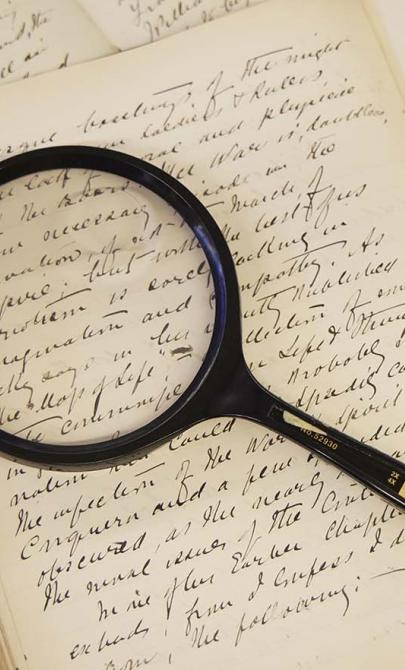Convict experiences
This complete uniform includes a jacket, trousers marked with a broad arrow, a waistcoat, a leather cap and a woollen cap. Although individual pieces of similar uniforms survive elsewhere, no other full set is known. Convict uniforms were often discarded or worn out quickly, which makes this example especially rare. It has likely survived because it was never worn.
Made in Van Diemen’s Land
The uniform was made in Van Diemen’s Land (now Tasmania) between 1830 and 1849. The woollen fabric was probably woven and sewn into uniforms at the Female Factory in Hobart, using natural dyes to colour the cloth. The fabric is heavy and rough, and features practical elements such as buttons down the sides of the trousers. These allowed a prisoner to remove their trousers while still wearing leg-irons. The broad arrow symbol signified that the wearer was the property of the British government.
Convicts were issued a new set of clothing every six months. The harsh conditions, including climate, physical labour and overcrowded prison facilities, meant uniforms deteriorated quickly.
Uniforms and identity
Convict clothing varied across the Australian colonies. In some cases, convicts brought their own clothes or were issued ‘slops’—a term for cheap, generic garments. There was no official uniform for convicts living in the general population, which concerned some free settlers who wanted an easy way to identify them. However, uniforms were issued for those in penal settlements or assigned to work gangs.
The ‘magpie’ uniform
The Library’s uniform is a rare example of the so-called ‘magpie’ design. These uniforms—originally black and white—were introduced for secondary offenders: convicts who reoffended while serving their sentence and were assigned to chain gangs.
Governor Lachlan Macquarie introduced the magpie uniform in New South Wales in 1814, and it was later adopted in Van Diemen’s Land. The uniform was designed to humiliate, with its bold, contrasting colours reminiscent of a medieval jester’s costume. By the 1820s, yellow replaced black in the design. In European traditions, yellow was often associated with disgrace.
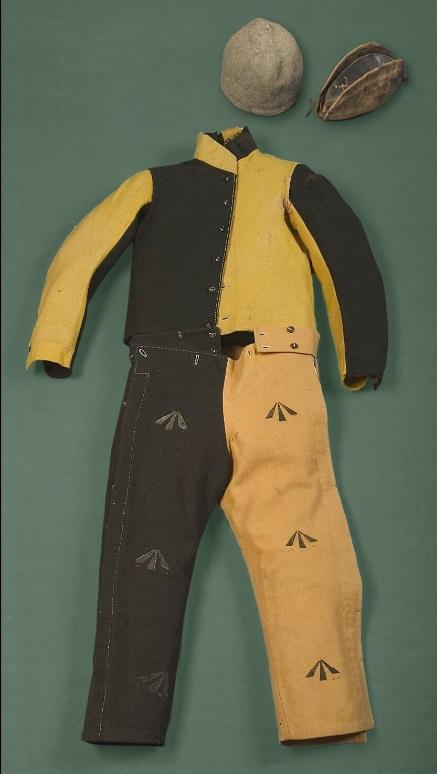
Convict uniform and two caps between 1830 and 1849, nla.gov.au/nla.obj-139411772
A secondary punishment uniform from the transportation era, coloured to distinguish continuing offenders. Hand stitched. From Van Diemens Land.
Convict uniform and two caps between 1830 and 1849, nla.gov.au/nla.obj-139411772
A secondary punishment uniform from the transportation era, coloured to distinguish continuing offenders. Hand stitched. From Van Diemens Land.
Learning activities
These activities explore the experiences of convicts and the early colonial period in Australia.
Activity 1: Investigating the convict uniform
Ask students to examine the full convict uniform.
- How many parts are there to this uniform?
- What is each item made of?
- What would it feel like to wear each item?
- How would you feel, wearing this uniform?
- Would the uniform be comfortable all year round in the Australian climate?
Activity 2: Building a glossary of convict-era terms
Create a class list of terms associated with the convict era.
Ask students to research the meaning of each term and compile a glossary. Include terms such as:
- ticket of leave
- pardon
- magpie
Activity 3: Exploring Arthur Bowes Smyth’s journal
Open the Journal of Arthur Bowes Smyth.
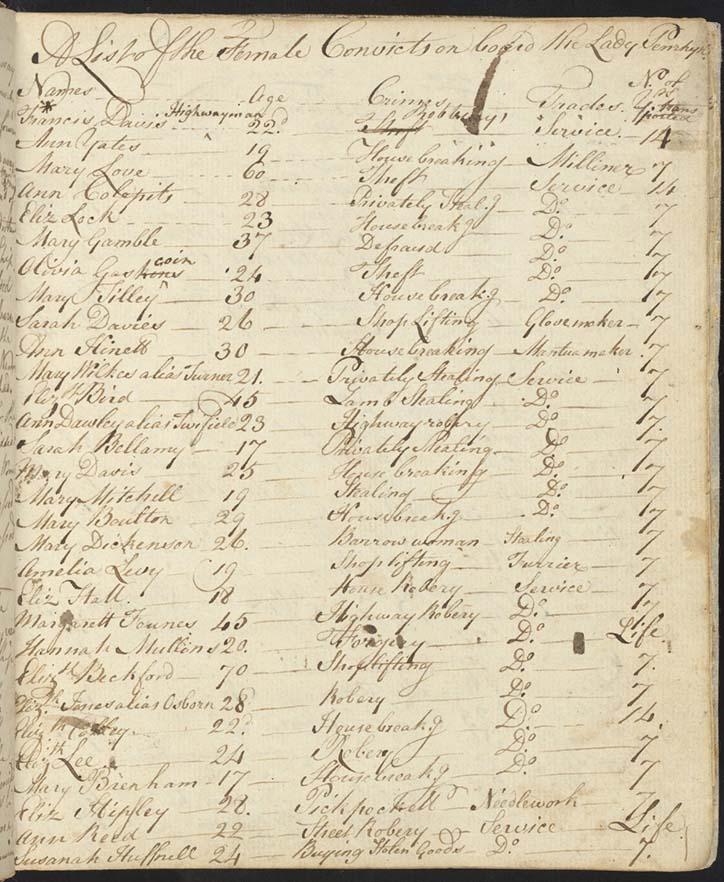
Arthur Bowes Smyth, Journal of Arthur Bowes Smyth, 1787, nla.gov.au/nla.obj-233364776
Arthur Bowes Smyth, Journal of Arthur Bowes Smyth, 1787, nla.gov.au/nla.obj-233364776
- Look at several pages as a class. Note: the handwriting may be difficult to read, even for students familiar with cursive.
- Navigate to Part 17 – the list of female convicts on the Lady Penrhyn.
- Use the list to introduce Arthur Bowes Smyth and his role as ship’s surgeon on a First Fleet vessel.
- Divide students into pairs. Ask each pair to examine 2 to 3 pages of the journal and try to read and interpret 2 sentences.
- Have students share their findings with the class in page order, helping build a basic understanding of the journal’s content.
Activity 4: Writing as a female convict
- Provide background information about the female convicts and reasons for their deportation.
- Ask each student to choose a name from Part 17 of Smyth’s journal.
- Task them with writing a diary entry as that person, imagining they are aboard the Lady Penrhyn.
- For added authenticity, invite students to write their entry using a cursive-style font.
Activity 5: Arriving in the colonies
- Ask students to imagine they have just arrived from England as part of the First Fleet.
- As a class, brainstorm a list of jobs required to establish a new colony.
- Discuss which tasks should be assigned to convicts and why.
Activity 6: Convict case studies
- Divide students into groups and assign each group one of the following historical convicts:
- William Redfern
- John Eyre
- Francis Greenway
- George Hughes
- Mary Reibey
- James Ruse
- Each group researches their convict and presents their findings to the class.
- As a class, discuss which convict was the most successful after completing their sentence.
- Establish criteria for defining 'success' in this context.
Suggested related resources:
You may wish to connect these activities with content from related topics Early explorers arts and First fleet.
